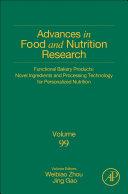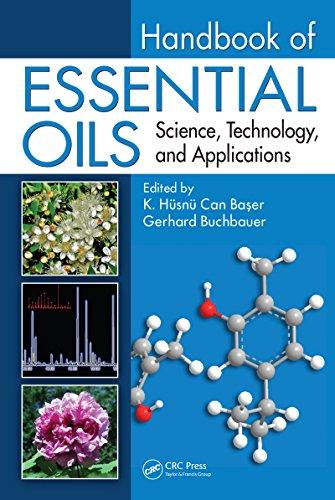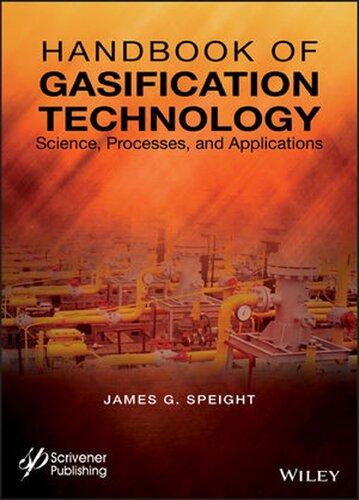Handbook of Banana Production, Postharvest Science, Processing Technology, and Nutrition Jasim Ahmed
Visit to download the full and correct content document: https://ebookmass.com/product/handbook-of-banana-production-postharvest-scienceprocessing-technology-and-nutrition-jasim-ahmed/

More products digital (pdf, epub, mobi) instant download maybe you interests ...

Dry Beans and Pulses Production, Processing, and Nutrition, 2nd Edition Muhammad Siddiq
https://ebookmass.com/product/dry-beans-and-pulses-productionprocessing-and-nutrition-2nd-edition-muhammad-siddiq/

Functional Bakery Products: Novel Ingredients and Processing Technology for Personalized Nutrition
Weibiao
Zhou
https://ebookmass.com/product/functional-bakery-products-novelingredients-and-processing-technology-for-personalized-nutritionweibiao-zhou/

Science and Applications of Nanoparticles Wagar Ahmed
https://ebookmass.com/product/science-and-applications-ofnanoparticles-wagar-ahmed/

Handbook of Vanilla Science and Technology 2nd Edition, (Ebook PDF)
https://ebookmass.com/product/handbook-of-vanilla-science-andtechnology-2nd-edition-ebook-pdf/

Handbook of Essential Oils: Science, Technology, and Applications – Ebook PDF Version
https://ebookmass.com/product/handbook-of-essential-oils-sciencetechnology-and-applications-ebook-pdf-version/

Handbook of Gasification Technology: Science, Processes, and Applications James G. Speight
https://ebookmass.com/product/handbook-of-gasificationtechnology-science-processes-and-applications-james-g-speight/

Advances in Food Rheology and Its Applications: Development in Food Rheology 2nd Edition Jasim
Ahmed (Editor)
https://ebookmass.com/product/advances-in-food-rheology-and-itsapplications-development-in-food-rheology-2nd-edition-jasimahmed-editor/

Sweet potato : chemistry, processing and nutrition Mu
https://ebookmass.com/product/sweet-potato-chemistry-processingand-nutrition-mu/

Cybersecurity and Cognitive Science 1st Edition Ahmed
Moustafa
https://ebookmass.com/product/cybersecurity-and-cognitivescience-1st-edition-ahmed-moustafa/
HandbookofBananaProduction,PostharvestScience,ProcessingTechnology, andNutrition
Editor MuhammadSiddiq
AssociateEditors
JasimAhmed MariaGloriaLobo
Thiseditionfirstpublished2020
©2020JohnWiley&SonsLtd
Allrightsreserved.Nopartofthispublicationmaybereproduced,storedinaretrievalsystem,ortransmitted,in anyformorbyanymeans,electronic,mechanical,photocopying,recordingorotherwise,exceptaspermittedby law.Adviceonhowtoobtainpermissiontoreusematerialfromthistitleisavailableathttp://www.wiley.com/go/ permissions.
TherightofMuhammadSiddiq,JasimAhmed,andMariaGloriaLobotobeidentifiedastheauthorsofthe editorialmaterialinthisworkhasbeenassertedinaccordancewithlaw.
RegisteredOffices
JohnWiley&Sons,Inc.,111RiverStreet,Hoboken,NJ07030,USA
JohnWiley&SonsLtd,TheAtrium,SouthernGate,Chichester,WestSussex,PO198SQ,UK
EditorialOffice
TheAtrium,SouthernGate,Chichester,WestSussex,PO198SQ,UK
Fordetailsofourglobaleditorialoffices,customerservices,andmoreinformationaboutWileyproductsvisitusat www.wiley.com.
Wileyalsopublishesitsbooksinavarietyofelectronicformatsandbyprint-on-demand.Somecontentthat appearsinstandardprintversionsofthisbookmaynotbeavailableinotherformats.
LimitofLiability/DisclaimerofWarranty
Whilethepublisherandauthorshaveusedtheirbesteffortsinpreparingthiswork,theymakenorepresentations orwarrantieswithrespecttotheaccuracyorcompletenessofthecontentsofthisworkandspecificallydisclaim allwarranties,includingwithoutlimitationanyimpliedwarrantiesofmerchantabilityorfitnessforaparticular purpose.Nowarrantymaybecreatedorextendedbysalesrepresentatives,writtensalesmaterialsorpromotional statementsforthiswork.Thefactthatanorganization,website,orproductisreferredtointhisworkasacitation and/orpotentialsourceoffurtherinformationdoesnotmeanthatthepublisherandauthorsendorsetheinformationorservicestheorganization,website,orproductmayprovideorrecommendationsitmaymake.Thiswork issoldwiththeunderstandingthatthepublisherisnotengagedinrenderingprofessionalservices.Theadviceand strategiescontainedhereinmaynotbesuitableforyoursituation.Youshouldconsultwithaspecialistwhereappropriate.Further,readersshouldbeawarethatwebsiteslistedinthisworkmayhavechangedordisappearedbetween whenthisworkwaswrittenandwhenitisread.Neitherthepublishernorauthorsshallbeliableforanylossofprofit oranyothercommercialdamages,includingbutnotlimitedtospecial,incidental,consequential,orotherdamages.
LibraryofCongressCataloging-in-PublicationData
Names:Siddiq,Muhammad,1957-editor.|Ahmed,Jasim,editor.| Lobo,MariaG.(MariaGloria),editor.
Title:Handbookofbananaproduction,postharvestscience,processingtechnology, andnutrition/editedbyMuhammadSiddiq,JasimAhmed,andMariaGloriaLobo.
Description:Hoboken,NJ:Wiley,2020.|Includesbibliographical referencesandindex.
Identifiers:LCCN2020012763(print)|LCCN2020012764(ebook)|ISBN 9781119528234(hardback)|ISBN9781119528241(adobepdf)|ISBN 9781119528272(epub)
Subjects:LCSH:Bananatrade.|Bananaproducts.|Bananas–Breeding.| Bananas–Processing.|Bananas–Nutrition.
Classification:LCCHD9259.B2H362020(print)|LCCHD9259.B2(ebook)| DDC338.1/74772–dc23
LCrecordavailableathttps://lccn.loc.gov/2020012763
LCebookrecordavailableathttps://lccn.loc.gov/2020012764
CoverDesign:Wiley
CoverImages:(toprow)©underworld/Shutterstock,©EugeneEdge/Shutterstock, ©barmalini/Shutterstock,(bottomrow)©DavidHerraezCalzada/Shutterstock, ©KPad/Shutterstock,©ShineNucha/Shutterstock
Setin9.5/12.5ptSTIXTwoTextbySPiGlobal,Chennai,India
PrintedandboundbyCPIGroup(UK)Ltd,Croydon,CR04YY 10987654321
Contents
ListofContributors vii
Preface ix
1BananaProduction,GlobalTrade,ConsumptionTrends,PostharvestHandling, andProcessing 1
EdwardA.Evans,FredyH.Ballen,andMuhammadSiddiq
2BiologyandPostharvestPhysiologyofBanana 19 MariaGloriaLoboandFranciscoJavierFernándezRojas
3BananaPathologyandDiseases 45 AndressadeSouza-PolloandAntoniodeGoes
4HarvestingandPostharvestTechnologyofBanana 61 MariaGloriaLoboandMartaMontero-Calderón
5PackagingTechnologiesforBananaandBananaProducts 81 PattarinLeelaphiwatandVaneeChonhenchob
6RipeBananaProcessing,Products,andNutrition 99 NeelimaK.ShandilyaandMuhammadSiddiq
7ProcessingofDehydratedBananaProducts 117 MarkA.UebersaxandMuhammadSiddiq
8GreenBananaProcessing,ProductsandFunctionalProperties 141 JasimAhmed
9InnovativeProcessingTechnologiesforBananaProducts 169 JasimAhmed
10Value-AddedProcessingandUtilizationofBananaBy-Products 191 DalbirSinghSogi
vi Contents
11ChemicalCompositionandNutritionalProfileofRawandProcessedBanana Products 207
JiwanS.SidhuandTasleemA.Zafar
12Banana(Musa spp.)asaSourceofBioactiveCompoundsforHealth Promotion 227
SusaneLopes,CristineVanzBorges,SaraMansodeSousaCardoso,MiguelFranciscode AlmeidaPereiradaRocha,andMarceloMaraschin
13MicrobiologyofFreshBananasandProcessedBananaProducts 245 AnuKalia
Index 268
ListofContributors
JasimAhmed Environment&LifeSciencesResearch Center
KuwaitInstituteforScientificResearch Safat,Kuwait
FredyH.Ballen TropicalResearchandEducationCenter UniversityofFlorida Homestead,Florida,USA
CristineVanzBorges DepartmentofChemistryand Biochemistry
SãoPauloStateUniversity(UNESP) SãoPaulo,Brazil
SaraMansodeSousaCardoso SchoolofEngineering CentreofBiologicalEngineering UniversityofMinho Braga,Portugal
VaneeChonhenchob DepartmentofPackagingandMaterials Technology KasetsartUniversity Bangkok,Thailand
EdwardA.Evans TropicalResearchandEducationCenter UniversityofFlorida Homestead,Florida,USA
AntoniodeGoes DepartmentofPlantPathology
SãoPauloStateUniversity(UNESP) SãoPaulo,Brazil
AnuKalia ElectronMicroscopyandNanoscience Laboratory
PunjabAgriculturalUniversity Ludhiana,Punjab,India
PattarinLeelaphiwat DepartmentofPackagingandMaterials Technology KasetsartUniversity Bangkok,Thailand
MariaGloriaLobo DepartmentofCropsProductionin TropicalandSubtropicalAreas InstitutoCanariodeInvestigaciones Agrarias ValledeGuerra Tenerife,CanaryIslands,Spain
SusaneLopes
PlantMorphogenesisandBiochemistry Laboratory FederalUniversityofSantaCatarina Florianopolis,Brazil
viii ListofContributors
MarceloMaraschin PlantMorphogenesisandBiochemistry Laboratory FederalUniversityofSantaCatarina Florianopolis,Brazil
MartaMontero-Calderón BiosystemsEngineeringDepartment UniversityofCostaRica SanJosé,CostaRica
MiguelFranciscodeAlmeidaPereirada Rocha SchoolofEngineering CentreofBiologicalEngineering UniversityofMinho Braga,Portugal
FranciscoJavierFernándezRojas PostharvestQualityDepartment CooperativaPlataneradeCanarias (COPLACA) SantaCruzdeTenerife Tenerife,CanaryIslands,Spain
NeelimaK.Shandilya ChewInnovationLLC Boston,Massachusetts,USA
MuhammadSiddiq DepartmentofFoodScience&Human Nutrition MichiganStateUniversity EastLansing,Michigan,USA
JiwanS.Sidhu CollegeofLifeSciences KuwaitUniversity Safat,Kuwait
DalbirSinghSogi DepartmentofFoodScienceand Technology GuruNanakDevUniversity Amritsar,Punjab,India
AndressadeSouza-Pollo LaboratoryofMolecularEpidemiology SãoPauloStateUniversity(UNESP) SãoPaulo,Brazil
MarkA.Uebersax DepartmentofFoodScience&Human Nutrition MichiganStateUniversity EastLansing,Michigan,USA
TasleemA.Zafar CollegeofLifeSciences KuwaitUniversity Safat,Kuwait
Preface
Bananaisthesecondmajorfruitcropproducedintheworld,withabout1200varietiesof bananasknownandclassifiedworldwide.Asamajortropicalfruit,bananaiscultivated inover130countriesthroughoutthetropicalandsubtropicalregionsonfivecontinents. Globalproductionofthebananahasincreasedbyabout150%inthelastthreedecades. Thebananamarketandtradehavegrownconsiderablysince1990,withthetwomajor importmarketsbeingtheUnitedStatesofAmericaandEuropeanUnioncountries.The year-roundavailabilityofbananaisattributedtoseveralfactors,includingthefactthatthe fruitisgrownunderdiverseclimaticconditions,whichallowsharvestingthroughoutthe year,andimprovementsintransportation,marketaccess,pre-harvestproductionpractices, andpostharvesttreatmentallowsthecroptobeshippedlongdistancesrelativelyfreeofany pestsanddiseases.
Asamajorstaplefruit,bananarepresentstheeighthtop-starchysourceintheworldand itspercapitaconsumptionisestimatedatabout0.5kgd 1 inLatinAmericaandevenmore than1kgd 1 inEasternAfrica.Bananasarehighlynutritiousandarichsourceofdietary fiberandanumberofvitaminsandminerals.Inadditiontobeingamajorsourceofcarbohydratesforover500millioninhabitantsoftropicalcountries,thebananaisalsoofmajor importanceasitformsaconsiderableportionoftheannualincomeforthestakeholders. Alongwiththeincreasedconsumptionofthisnutrient-richfruit,theprocessedbanana markethasalsoseensimilargrowth,especiallybananaflourasafoodingredient,juiceand beverages,andshelf-stabledriedproducts.
Thisbookprovidesacontemporarysourceofinformationthatbringstogethercurrent knowledgeandpracticesinthevalue-chainofbananaproduction,postharvesthandling, value-addedprocessing,andnutrition.Thisvalue-chainapproachtothetopicistheunique featureofthisbook,withanin-depthcoverageonawidevarietyofpertinenttopics:productionandglobaltrade,biologyandphysiology,pathologyanddiseases,postharvesthandling,packagingtechnologies,processingandprocessedproducts,innovativeprocessing technologies,nutritionalprofileandhealthbenefits,bioactiveandphytochemicalcompounds,microbiology,andvalue-addedutilizationofbananaby-products.Anexperienced teamofover25contributorsfromAsia,NorthAmerica,SouthAmerica,andtheEuropean Unionhascontributedtothisbook.Thesecontributorscomefromafieldofdiversedisciplines,includingagriculturaleconomics,horticulture,cropsciences,plantpathology,food chemistry,foodbiochemistry,foodscienceandnutrition,foodengineering,andmolecular epidemiology.
x Preface
Theeditorsacknowledgemanyindividualsfortheirsupportfromconceptionthroughto thefinaldevelopmentofthisbook.Weofferoursincerethanksandgratitudetoallauthors fortheircontributionsandforbearingwithusduringthereviewandfinalizationprocessof theirchapters.Wearegratefultoourfamilymembersfortheirunderstandingandsupport, enablingustocompletethiswork.Wededicatethisworktotheworthycontributionsof thenumerousresearchersandstudentsthroughouttheworld,fortheirdecadesofdevoted effortstoimprovethequalityandutilizationoffreshbananasandofprocessedbanana products.
EastLansing,March2020
MuhammadSiddiq
JasimAhmed
MariaGloriaLobo
BananaProduction,GlobalTrade,ConsumptionTrends, PostharvestHandling,andProcessing
EdwardA.Evans 1 ,FredyH.Ballen 1 ,andMuhammadSiddiq 2
1 TropicalResearchandEducationCenter,UniversityofFlorida,Homestead,FL33031,USA
2 DepartmentofFoodScience&HumanNutrition,MichiganStateUniversity,EastLansing,MI48824,USA
Introduction
Bananasareproducedinmorethan130countriesbysmall-scaleandlarge-scalefarmers alike.Thisfruitplaysaveryimportantroleincontributingtofoodsecurityandasasourceof exportrevenueinsomeeconomies.Thesocioeconomicimportanceofbananaproduction andtradeshouldnotbeunderestimated.Aboutone-fifthoftheglobalbananaproduction isdestinedforinternationalmarkets.Between2008and2017,globalbananaproduction increasedby15.35%,reaching113.92millionmetrictons(MMT)in2017.Factorsdriving theriseinbananaproductionduringthisperiodwereincreasesinyieldandharvestedarea. Overthesameperiod,bananaexportsgrewby26.67%,reaching23.18MMTin2017.The topthreebananaexporters,Ecuador,Philippines,andCostaRica,accountedforabout50% ofglobalexportsin2017,whilethetopthreebananaimporters,theUnitedStates,Germany, andRussiaaccountedforabout35%oftheglobalimporttrade(FAO2019a).
Historically,thebigmultinationalcompaniescontrolledbananaproductionandtrade, butduetoachangingbusinesslandscape,particularlylegal,labor,andenvironmental issues,thesecompaniesnowfocusmoreonthetransportationanddistributionsegment ofthefruitvaluechain.Thissituationledtothegrowthofnationalbananacompanies thathavetheoptiontosellthefruittothebigmultinationalcompaniesordirectlyto retailersandsupermarketchains.Asthenumberofparticipantsonthesupplysidehas increased,thenumberofparticipantsontheretailsidehasdecreasedasresultofrenewed interestinmergersandacquisitionsinthefoodretailindustry.Consequently,thereare nowmoresellersandfewerbuyersinthebananamarket.Unfortunately,thischangehas notnecessarilyresultedinbetterwagesandpricesintheexportgrowingregions.
Exportsofconventionalbananastodevelopedcountriesareplateauing,whereasexports oforganicbananastothesecountriescontinuetoincrease.OrganicbananasintheUS marketcommandasignificantpremiumprice;onaverage,duringtheperiod2013–2017, organicbananasattheUSretaillevelcommandedapremiumof$0.29/lbovertheprice paidforconventionalbananas(USDA-AMS2018).
Irregularweatherpatternsandfungaldiseasesareusuallythemaindisruptorstotheotherwiseyear-roundsupplyofbananas.Thebiggestthreattoglobalbananaproductionis HandbookofBananaProduction,PostharvestScience,ProcessingTechnology,andNutrition, FirstEdition. EditedbyMuhammadSiddiq,JasimAhmed,andMariaGloriaLobo. ©2020JohnWiley&SonsLtd.Published2020byJohnWiley&SonsLtd.
1BananaProduction,GlobalTrade,ConsumptionTrends,PostharvestHandling,andProcessing FusariumWiltTropicalRace4(TR4),afungaldiseasewiththepotentialtodisruptbanana productionandtradeasweknowthem.Thischapterprovidesanoverviewofrecenttrends anddevelopmentsinworldbananaproduction,exportsandimports,consumptiontrends andpricesintheUSandEuropeanUnion(EU)markets,andpostharvesthandling,processing,nutritionalprofileandhealthbenefitsofbanana.
BananaProduction,Trade,andConsumption
Between2008and2017,globalbananaproductionexpandedby15.35%,from98.76MMTin 2008to113.92MMTin2017(Figure1.1).Factorsdrivingthegainsinproductionduringthis periodwereincreasesinyield(5.76%)from19.11metrictons/hectare(MT/ha)in2008to 20.21MT/hain2017,andharvestedarea(9.09%)from5.17millionhectares(Mha)in2008to 5.64Mhain2017.Commercialbananaproductionoccursunderverydiverseclimaticconditionsintropicalandsubtropicalregionsworldwide.Asiaistheleadingbananaproduction region,accountingfor54.18%ofthetotalproductionin2017,followedbytheAmericasand theCaribbean(26.33%),Africa(17.57%),Oceania(1.52%),andtheEU(0.40%)(FAO2019a). Bananafruitplaysanimportantroleforhouseholdfoodsecurity,incomegenerationasa cashcrop,andasanexportrevenuesourcearoundtheworld.
Althoughbananasaregrowncommerciallyinmorethan130countries,productionis highlyconcentratedinthetop10producingcountries,accountingfor73.8%ofthetotal productionduringtheperiod2015–2017(Table1.1).Indiaisbyfarthelargestproducer, accountingfor26.8%ofthetotalworldproductionin2017,followedbyChina(9.8%)and Indonesia(6.3%).Together,thetopthreecountriesaccountedforabout43%oftheglobal production.Otherimportantbananaproducingcountries,withtheirproductionshare,
Table1.1 World’s10majorbananaproducersbyquantity,2008 2017(millionmetrictons).
Country1 2008200920102011201220132014201520162017
%Share, 2015–2017
India26.226.529.828.526.527.629.729.229.130.526.0
China7.88.89.610.411.612.111.812.513.111.210.8
Indonesia66.45.86.16.26.36.99.577.26.9
Brazil76.877.36.96.976.86.86.75.9
Ecuador6.77.67.97.4766.87.26.56.45.8
Philippines8.799.19.29.28.65.75.85.86.05.2
Angola1.7222.633.13.53.63.94.33.5
Guatemala2.32.72.62.933.33.43.83.83.93.4
Colombia22223.53.83.33.73.73.83.3
Tanzania2.433.23.12.52.73.23.63.63.53.1
Top-10,total70.874.87979.579.480.481.385.783.3 83.373.9
Others,total28.028.629.729.929.931.831.529.429.330.626.1
World,total98.8103.4108.7109.4109.3112.2112.8115.1112.6113.9100.0
1 Rankedby2017production. Source:FAO(2019a).
includeBrazil(5.9%),Ecuador(5.5%),thePhilippines(5.3%),Angola(3.8%),Guatemala (3.4%),Colombia(3.3%),andTanzania(3.1%)(FAO2019a).
Diseasecontinuestobethebiggestthreattobananaproduction,particularlyBlack SigatokaandFusariumWilt(TR4).TheeconomicimpactofBlackSigatokaissignificantforproducersduetothecostofprotectionmeasures,suchasregularfungicide applications,whichmayincreaseproductioncostsby25%ormore(FAO2013).The diseasethatconstitutesthebiggestthreattobananaproductionisFusariumWilt (TR4),whichhasthepotentialtoinfectmostbananavarieties,includingthewidely cultivatedCavendishcultivar,andeliminateallbananaplantationsworldwide.Ithas alreadyinfestedplantationsinSouthEastAsia,Pakistan,Jordan,Mozambique,and Australia.Thereisnoviableandfullyeffectivetreatment;theonlypreventivemeasure isquarantinebecausethefungussporesmayremainlatentinthesoilfordecades(FAO 2019b).OnlythecisgenicCavendish-typebananawithagenetakenfromawildbanana hasremainedfreeofthediseasesofar,withadditionalresearchneeded(Wageningen University2017).
Thebulkofbananaproductioniscultivatedunderconventionalpractices;despitepremiumpricesininternationalmarkets,globalorganicbananaproductionremainslow.In termsofarea,in2012,landunderorganicbananareached78,831ha,or1.5%oftheglobal areaharvested.Since2012,organicbananaareahasdecreasedby35%,reaching58,407ha in2016(FiBL2018).Onereasonforthisdropinareacouldbediseaseoutbreak;forinstance, organicbananagrowersinGuatemalaandHondurashavelosttheirshareoftheUSorganic bananamarketsince2014duetotheneedforfungicidestocontrolBlackSigatoka(Fresh Plaza2016).
1BananaProduction,GlobalTrade,ConsumptionTrends,PostharvestHandling,andProcessing
Intermsofmarketstructure,thesupplysideofthebananamarkethaschanged noticeablyfromwhenitoncewasanoligopoly,whereafewverticallyintegratedmultinationalcompaniescontrolledthetrade.Forinstance,thetopfivemultinationalbanana companies,Chiquita,DelMonte,Dole,Fyffes,andNoboa,wentfromcontrolling65.3% oftheglobalbananaexportsin1980to44.4%by2013(FAO2014).Severalfactorsare responsiblefortheobservablestructuralchange;chiefamongthemwastheconscious decisiononthepartofthetraditionalmultinationalcompaniestoreducetheirlevelof riskexposurebymovingfromprimaryproductiontofocusingtheirattentionmoreonthe transportationanddistributionaspectsofthevaluechain.Thisdecisionopenedthedoor fortheriseinthenumberofnationalcompaniesbetterplacedtominimizesomeofthe productionrisksandtoguaranteesupply.Duetothewaytheyoperate,nationalcompanies sellthefruittothebigmultinationalcompaniesordirectlytosupermarketchainsandfood retailers.
Asresultofachangingbusinesslandscape,thebigmultinationalbananacompanies haveundergonesignificantchanges.Oncepubliclytradedcompanies,threeofthebiggest multinationalbananacompanieshavebecomeprivate.Dolewasprivatizedin2013ina transactionvaluedat$1.2billion(Reuters2013).Bytheendof2014,Cutrale-Safrahad acquiredChiquitainatransactionestimatedat$1.3billion(Reuters2014).InDecember 2016,SumitomoacquiredFyffesinatransactionvaluedat€751million(Reuters2016).Privatizationwillallowthesecompaniesamoreefficientuseoftheirresourcestofocuson competitivepressuresastheyplanfortheirlong-termviability.
Whiletherehasbeenanincreaseinthenumberofparticipantsonthesupplysideof thebananamarket,thenumberofparticipantsontheretailside,especiallyinthedevelopedworld,hasdecreasedduetorenewedinterestinmergersandacquisitionsinthefood retailindustry.Asaresult,marketpowerinthebananamarkethasshiftedfromthesupplierstomajorsupermarketchainsandfoodretailers,whichnowhavemoresupplychoices. Retailersmaybuythefruitfromsmallwholesalersordirectlyfromproducers,bypassing thetraditionalintermediaries.However,itremainsuncertainhowthischangemayhavea positiveimpactonwagesandpricesintheexportgrowingregions.Fairtradebananasrepresentonesuccessfulefforttoimprovenotjustpricesandwagesinthegrowingregions. In2016,certifiedbananaproducersreceived€28.50millionfromtheFairtradepremium, anincreaseof5%comparedwiththepreviousyear.Thepremiumreceivedwentforpaymentstosmallproducersandhiredlabororganizations,andinvestmentsinservicesand infrastructure(Fairtrade2018).
GlobalTradeExportsandImports
Aconsiderableshareofthetotalbananaproductiongoestotheexportmarket,withabout one-fifthoftheglobalproductionsoldintheinternationalmarkets.In2017,20.35%of theglobalbananaproduction(valuedat$11.49billion)wenttotheinternationalmarkets. Onaverage,about18%ofthetotalbananaproductionwasexportedduringtheperiod 2008–2017andexportsshowedasignificantincrease(26.7%)from18.30MMTin2008 to23.18MMTin2017.Exportsvalueincreasedby49.9%,from$7.67billionin2007to $11.49billionin2016(FAO2019a).Thetop10bananaexporterscontrolmorethan80%of
Table1.2 World’s10majorfreshbanana-exportingcountries,2008–2017(millionmetrictons).
Country1 2008200920102011201220132014201520162017 %Share, 2015–2017
Ecuador5.35.75.25.85.25.45.76.166.429.1
CostaRica2.11.71.91.91.91.92.222.42.510.9
Guatemala1.41.51.41.51.922.12.22.12.310.4
Colombia1.71.81.71.81.71.51.71.61.81.98.3
Philippines2.21.71.622.63.33.11.21.42.78.3
Belgium1.31.21.21.31.21.21.31.11.11.35.4
Honduras0.60.50.50.50.60.70.60.70.70.63.2
USA0.50.50.50.50.50.50.60.60.60.62.8
Netherlands0.10.10.10.20.20.30.30.40.50.72.6
Mexico0.10.20.20.20.30.30.40.40.50.62.2
Top-10,total15.314.914.315.716.117.218.016.417.119.683.2
Others,total3.03.33.23.13.02.93.73.33.73.616.8
World,total18.318.217.518.719.120.121.719.720.8 23.2
1 Rankedby2017exporters. Source:FAO(2019a).
thetotalexports(Table1.2).Interestingly,noneofthetopthreeproducers(India,China, andIndonesia)playsamajorroleintheinternationalbananamarket.Aswasthecase withproduction,bananaexportsarehighlyconcentrated,withthetopthreeexporters accountingforabout50%oftheglobalexportsofthefruitduringtheperiod2015–2017. Ecuadoristheleadingexporter,accountingfor29.1%oftheexportsduringthesame period,followedbyCostaRica(10.9%)andGuatemala(10.4%).
CountriesinCentralAmerica,morespecificallyGuatemala,Ecuador,andCostaRica, havesignificantlyincreasedtheirparticipationintheinternationalmarkets,withtheir exportsgrowingby64.3,20.8,and19.1%,respectively,duringtheperiod2008–2017. Oneofthereasonsbehindthenoticeableincreaseinexportsisthecloseproximityto theUSmarket,whichisanadvantageintermsoflowertransportationcostsandtransit times.Interestingly,BelgiumandtheUnitedStatesareincludedinthetop10exporters; however,itisimportanttoclarifythattheyarere-exporters,withBelgiumshippingthe fruittotheEUmarketandtheUnitedStatesshippingthefruittotheCanadianmarket (FAO2019a).
Bananaimportvaluehasgrownatanaverageannualrateofabout3.0%,from$11.74billionin2008to$14.93billionin2017.Table1.3liststhetop10bananaimportingcountries, withworldtotalimportvolumeincreasingby26.1%,from17.6MMTin2008to22.2MMT in2017.TheUnitedStatesistheleadingbananaimporter,accountingforover22.3%ofthe totalimportsduringtheperiod2015–2017,followedbyGermany(6.7%),Russia(6.6%),Belgium(6.2%),andtheUK(5.3%).Together,thesefivecountriesaccountedforabout47%of theimportsduringtheperiod2015–2017(FAO2019a).
1BananaProduction,GlobalTrade,ConsumptionTrends,PostharvestHandling,andProcessing
Table1.3 World’s10majorimportingcountries,2008–2017(millionmetrictons).
Country1 2008200920102011201220132014201520162017
%Share, 2015–2017
USA43.64.14.14.44.54.64.64.64.822.3
Germany1.41.41.21.31.21.31.41.41.41.46.7
Russia111.11.31.31.31.31.21.41.56.6
Belgium1.51.31.41.31.31.31.31.21.31.46.2
UK10.91111.11.11.11.11.15.3
China0.40.50.70.80.60.51.11.10.91.04.8
Japan1.11.31.11.11.110.9111.04.7
Netherlands0.20.20.20.30.40.40.50.70.80.93.8
Italy0.70.70.70.70.60.70.70.70.70.83.4
France0.60.50.50.60.50.60.60.60.60.73.0
Top-10,total11.911.412.012.512.412.713.513.613.814.766.8
Others,total5.75.85.96.25.97.06.76.86.57.533.2
World,total17.617.217.918.718.319.720.120.420.322.2100.0
1 Rankedby2017importers. Source:FAO(2019a).
USProduction,Imports,andConsumption
USProduction
Becauseofclimaticrequirements,mostofthecontinentalUnitedStatesisnotsuitable forbananaproduction;limitedcommercialproductiontakesplaceonlyinHawaiiand Florida.InHawaii,thetopbanana(Cavendishcultivar)producingstate,theindustry iscontracting.Theareaharvestedpeakedat445hain2008,beforedecliningto242ha in2017.Thatsameyear,productionwasestimatedat3,024MT(metrictons)valuedat $6.02million(USDA-NASS2018).Yieldhasalsotrendeddownward,from17.73MT/hain 2008to15.84MT/hain2017,whichisconsiderablylessthantheyieldobtainedinother commercialgrowingareassuchasCostaRica(59.48MT/ha)orEcuador(39.75MT/ha) (FAO2019a).
FloridabananaproductionoccursmainlyinMiami-DadeCounty,whichhasasubtropicalclimateconsideredmarginalforcommercialbananaproduction.Popularcultivars forthisareaincludeThai-banana“Hawaiano,”“Goldfinger,”and“Monalisa”(Crane andBalerdi2016).Floridabananaproductiontakesplaceonabout450ha(USDA-NASS 2012).Becauseofthelowproductionvolumes,thereisnoofficialdataonFlorida’sbanana production,yield,andfarmgatevalue.
USImports
In2017,totalUSfreshbananaimportswerevaluedat$2.1billion;conventionalbananas, comprisingthebulkofimports,werevaluedat$1.87billion,whileorganicbananaimports
Figure1.2 USconventionalandorganicbananaimports,2008–2017.Source:USDA-FAS(2018). werevaluedat$232million.USfreshbananaimportshavegrownatanannualrateofabout 2.4%,from3.97MMTin2008to4.81MMTin2017(Figure1.2).Thegrowthinimports since2012hasbeenminimal,withorganicbananaimportshavingmodestgrowthand conventionalbananaimportsreachingaplateau(USDA-FAS2018).Guatemalaisbyfar thedominantsupplierofconventionalbananastotheUSmarket,withamarketshareof 41.8%duringtheperiod2015–2017,followedbyCostaRica(18.5%)andHonduras(13.7%). Together,thesethreecountriesaccountfor74%ofUSbananaimports.OtherimportantconventionalbananasupplierstotheUSmarketandtheirimportshareareEcuador(13.5%), Mexico(6.5%),andColombia(5.1%).
USorganicbananaimportshavenotfollowedaconsistentupwardtrend,fluctuating between0.52MMTin2013and0.43MMTin2017.Thisisprimarilyduetothelossof organiccertificationbygrowersinGuatemalaandHondurasfromtheuseoffungicides tocontrolBlackSigatoka(FreshPlaza2016).Ecuadoristhemainsupplieroforganic bananastotheUSmarket,accountingforabouthalfofthetotalsupplyofthefruit duringtheperiod2015–2017,followedbyPeru(17.25%)andColombia(15.57%).These threecountriessuppliedover80%ofthetotalorganicbananaimportsduring2015–2017 (USDA-FAS2018).
Table1.4illustratesimportpricesforselectedexportersofconventionalandorganic bananasduringtheperiod2013–2017inUSdollarsperkilogram(kg).Overthisperiod, theaverageimportpriceofconventionalbananasrangedfromalowof$0.48/kgin2013to ahighof$0.52/kgin2017,whileimportpricesoforganicbananasrangedfromalowof $0.61/kgin2013toahighof$0.68/kgin2015.Hondurasisthelowest-costsupplierofboth conventionalandorganicbananastotheUSmarket.
USConsumption
Figure1.3illustratesUSpercapitaconsumptionofselectedfruitsfortheperiod2008–2017. Freshbananaconsumptionhasincreasedatanannualrateof1.36%,whileorange consumptionhasdecreasedby7.72%,andappleconsumptionhasremainedunchanged
1BananaProduction,GlobalTrade,ConsumptionTrends,PostharvestHandling,andProcessing
Table1.4 Averageannualconventionalandorganicbananaimportpricesfromselectedsuppliers, 2013–2017(US$/kg).
Partner country 20132014201520162017 Conv.Org.Conv.Org.Conv.Org.Conv.Org.Conv.Org.
Guatemala0.50—0.51—0.51—0.52—0.52—
Ecuador0.500.600.490.600.490.620.530.570.500.61
Colombia0.500.660.520.840.530.840.540.820.560.81
Peru—0.76—0.75—0.75—0.74—0.69
Honduras0.450.430.470.480.470.490.470.490.480.50
Average0.480.610.490.670.490.680.510.660.520.65
Source:USDA-FAS(2018).
Figure1.3 USpercapitaconsumptionofselectedfruits,2008–2017.Source:USDA-ERS(2018).
(USDA-ERS2018).Bananascontinuetobeoneofthemostaffordablefruitsonthe market,whichisimportantgiventhewideavailabilityoffruitsintheUSmarket.Different bananacultivarsaresoldintheUSmarket;intermsofvolume,“Cavendish”isbyfarthe predominantcultivar,withotherimportantcultivarsbeing“Baby,”“Red,”“Manzano,” “Burro,”and“Saba.”
Figure1.4illustratesUSaverageretailpricesforbothconventionalandorganicbananas from2013to2017.Retailpricesforconventionalbananasfluctuatedfromalowof$0.43/lb inJanuary2016toahighof$0.54/lbinDecemberofthesameyear.Theaverageretailprice forconventionalbananasduringtheperiod2013–2017wasaround$0.47/lb.Retailprices fororganicbananasfluctuatedfromahighof$0.85/lbinJune2013toalowof$0.69/lbin May2017.Theaveragepricefororganicbananasduringtheperiod2013–2017was$0.76/lb. Onaverage,thepremiumpricecommandedbyorganicbananaswas$0.29/lb,whichis 62.1%morethantheaveragepriceofconventionalbananas.Duringtheperiod2013–2017,
Figure1.4 USaverageretailpricesforconventionalandorganicbananas,2013–2017.Source: USDA-AMS(2018).
thepremiumpricefororganicbananasdecreasedslightlyby6%,from$0.31/lbinJanuary 2013to$0.29/lbinDecember2017(USDA-AMS2018).
EuropeanUnionMarket
BananaproductiondestinedformarketsintheEUoccursinGreece,Spain,France (MartiniqueandGuadeloupe)Chypre,andPortugal.EUmarketbananaproduction hasgrownatanannualrateof0.9%,from567,560MTin2008to613,730MTin2017 (Figure1.5).Domesticbananaproductionaccountedfor11.3%ofthetotalsupplyduring theperiod2008–2017,Spainisthemainbananaproducer,accountingfor65.3%ofthe totalproductionin2017,followedbyFrance(30.4%)andPortugal(3.2%)(European Commission2018).Theincreaseindomesticbananaproductionhasbeenmainlythe resultofsustainedproductiongainsfromSpain.
In2006,theEUestablishedanimportregimetokeepabalancebetweenthenon-EU suppliersandthedomesticEUbananaproducers.LatinAmericanbananaimportswere subjecttoaMostFavoredNationstariffof€176/MT,whiletheAfrican,Caribbean,and Pacific(ACP)countriesweresubjecttoadutyfreeaccessquotaof775,000MT.Later,the EUagreedtocutthetariffineightsteps,from€176/MTin2009to€114/MTby2017or2019 (EuropeanCommission2013).
Overa10-yearperiod(2008–2017),EUbananaimportsincreasedby17.4%,from 4.94MMTin2008to5.80MMTin2017.EUbananaimportsfromLatinAmericancountriesaccountedfor71.2%ofthetotalsupplyandtheACPcountriesaccountedfor18.5% duringtheperiod2008–2017.
Figure1.5 EUtotalbananasupplybysource,2008–2017(ACP = African,Caribbean,andPacific).
Source:EuropeanCommission(2018).
Ecuador,Colombia,andCostaRicaarethemainbananaexportersfromLatinAmerica.Thesethreecountriessuppliedmorethan85%ofthefruitvolumefromthatregion. TheDominicanRepublic,CameroonandIvorycoastarethemainsuppliersfromtheACP countries,contributingmorethanhalfofthefruitfromthatgroup.
Figure1.6illustratesbananapricesfortheEUmarketatthefirstunloadingportforthe period2008–2017.LatinAmericaisthelowestcostsupplierofbananastotheEUmarket;on averagethefruitpricesfromthatregionwerecloseto€0.60/kgduringtheperiodconsidered. PricesfordomesticbananasintheEUmarketcommandedahigherpriceformostofthe periodconsidered;averagepriceforEUproducedbananaswas€0.72/kg.Whilebanana pricesfromLatinAmericaandEUsourcesremainedstableduringtheperiod,bananaprices fromtheACPcountriesincreasedfrom€0.61/kgin2011to€0.77/kgin2017.
MarketOutlook
Duringtheperiod2008–2017,globalbananaproductionandtradeincreasedsignificantly; however,therearesignsthatdemandforconventionalbananasindevelopedcountries, particularlytheUnitedStates,isdecelerating.
Becausebananaproductionisnotseasonal,pricesininternationalmarketsremain fairlystable.Occasionaldisruptionsinsupplywillcontinuetobetheresultoflogistic constraints,complexweatherpatterns,(e.g.,ElNiñoandLaNiña),aswellasdisease outbreaksinthemajorexportgrowingregions.ComparedwithCentralAmerica,South Americawillcontinuetobethemorereliablebananasuppliertointernationalmarkets givenitsrelativelylowincidenceofadverseweatherevents,anditswellestablishedsupply anddistributionnetwork.
Short-termincreasesinorganicbananaproductionmaycomefromhigheryieldsasharvestedareahastrendeddownward.Priceincentiveswilllikelydrivelong-termincreasesin organicbananaproductionduetothemarketpremiumfororganicbananasandtheadditionalconversionofconventionalbananaareastoorganicproduction.
Itisunclearhowtheshiftinmarketpowerfromsupplierstoretailersmayresultinbetter markettermsforworkersandgrowersintheproducingregions.Eventhoughtherehasbeen someprogresstoimprovethissituation,thedebateaboutfairpricesandwagescontinuesto berelevant.Forexample,Fairtraderepresentsasuccessinimprovingsocialandeconomic conditionsforsmallbananagrowersandworkers.
ThebiggestthreattoglobalbananaproductionisFusariumWilt,morespecificallyTR4, whichisaveryaggressivediseasethathasthepotentialtoeliminateallbananaplantations.Thesearchforaviablediseasetreatmentisstillaworkinprogress.Thearrivalof theTR4diseasetothemainexportgrowingregionsdisruptsproductionandtrade,and risksthelivelihoodofmillionsofworkers.Recentadvancesinthedevelopmentofcultivars tolerant/resistanttoTR4showpromiseforcommercialproduction,butmoreresearchis necessary.
PostharvestHandlingandStorage
Bananasareharvestedatfull-mature(green)stageandharvestedbunchesarehungin ashadedandcoolplace,whichfavorsflavordevelopment7 14daysaftertheharvest (ArvanitoyannisandMavromatis2009).Bananasundergoripeninginfourdistinctphases: (i)pre-climactericor“greenlife”stage;(ii)climactericstage;(iii)ripestage;andfinally (iv)senescence.Inordertoidentifytheripeningstageofbananas,standardcolorcharts areusedcommercially,e.g., Stage-1,darkgreen; Stage-2,lightgreen; Stage-3,moregreen thanyellow; Stage-4,moreyellowthangreen; Stage-5,yellowwithgreentips; Stage-6,
Figure1.6 EUbananapricesatfirstunloadingportbyorigin,2008–2017.Source:European Commission(2018).
1BananaProduction,GlobalTrade,ConsumptionTrends,PostharvestHandling,andProcessing
yellow;and Stage-7 ,yellowwithbrownfreckles.Duringripening,differentphysiological, biochemical,andorganolepticchangesleadtoasoftandedibleripefruitduringthe ripeningprocess.Afterstorageandnaturalripening,bananasarethenshippedtomarkets attheiroptimalripeningstageoratfullmaturegreenstagedependingonvarietyandfinal use(Bello-Pérezetal.2012).
Postharvestlossesarecommonifharvestedfruitisnotstoredandtransportedatoptimumtemperatureconditions.Zhangetal.(2005)indicatedthatabout20%ofallbananas harvestedmaybecomecullsandthusunmarketable.Kader(2005)reportedthatestimatesof fruitsandvegetablespostharvestlossesindevelopingcountriesaregenerallymuchhigher thanthoseintheUS,andcanbeupto50%forsomefreshfruits.Theselossesmaybedueto sortingofbananastoosmallforshippinganddamaged,injuredorspoiledfruitsthatcould inducemicrobialcontaminationofthefullbunchinthecollectionstations(Bello-Pérez etal.2012).ArvanitoyannisandMavromatis(2009)suggestedthatshelflifeofbananas couldbeextendedbyapplyinginhibitorsthatlimitrespirationand/orethyleneproduction orbyusingmodifiedatmospherepackaging(MAP).Kader(2003)recommendedmaintainingcold-chainthroughoutthefruitmarketingchannelstominimizelossesandensurefruit quality(Figure1.7).
HARVEST
Protect the product from the hot sun
Transport quickly to the packing house
COOLING
Minimize delays before cooling
Cool the product as soon as possible
TEMPORARY STORAGE
Store the product at its optimum temperature
Practice “first-in-first-out” rotation
Ship to market as soon as possible
TRANSPORT TO MARKET
Use refrigerated loading area
Cool truck before loading
Put insulating plastic strips inside door or reefer if the truck makes multiple stops
HANDLING AT DESTINATION
Use a refrigerated unloading area
Measure product temperature
Move product quickly to proper storage area
Display at proper temperature range
Avoid delays during transport
HANDLING AT FOODSERVICE OUTLETS
Store product at proper temperature
Monitor product temperature during storage
Use the product as soon as possible
Figure1.7 Maintainingcoldchainforthe perishablecommodities.Source:Adaptedfrom Kader(2003).
Low-temperaturestorageisoneofthemostimportantfactorsthatcancontroltherespirationrateofbanana,however,italsoinduceschillinginjurythatresultsinbrownpeelspots. Mohapatraetal.(2010)reportedthatataripeningtemperatureof20 ∘ Cusingethylene,a betterflavordevelopswithlessastringencyandsweetness.Highrelativehumidity(95%) preventsbrowningspotsbutinducesfingerdroppingoff.Bananastoredunderlowrelativehumiditywillfavorethyleneproductionandrespirationpriortoclimactericstage (Bello-Pérezetal.2012).However,lowhumiditygreatlyincreaseswaterlossinbananaby 3–4timeshigherthanthefruitstoredathighhumidity.
Theuseofappropriatepackagingtoreducedamageisimportantandcushioningisused occasionally,especiallywhenbananasaresoldathigh-endmarkets.Bananashippingcontainersshouldpreferablybestackabletoavoidcompressionforce,whichcaninducebruisingandsoftenfruittexture.Ventingofshippingcontainersisalsorecommendedtoallow efficientcoolingtomaintainthebestqualityofthefruit.Forbulkpackaging,container linersareused.Typically,linersaremadeofplasticfilms,suchaspolyethylene(PE)or polypropylene(PP),mainlytominimizewaterlossofbananaduringstorageanddistribution(Chonhenchobetal.2017).
ProcessedProducts
Figure1.8showstypicalstepsforpreparingvariousprocessedproductsfrombothgreen andripebananas.Themostcommonproductspreparedfromgreenbananasinclude boiled/steamedbanana,driedorfriedchips,flour,andstarch.Ripebananasareprocessed intofarmorediverseproductsofcommercialsignificance,e.g.,pulp/puree,clarifiedjuice, babyfoods,driedandfriedchips,fruitbars,andflour(Mohapatraetal.2011).Banana flourhasapotentialtobeusedasahealthyingredientinotherpreparedproducts,e.g., asapartialmeatandwheatflourreplacerinpattiesandsnacks,respectively.Inaddition tocommercialprocessing,bananasarealsousedinavarietyofculinaryapplicationsin foodserviceaswellashomebakedproducts.
Preparationofprocessedfruitproductsrequiresvariouspreliminaryunitoperations. Duringpreparatoryoperationsandsubsequentprocessing,polyphenoloxidase(PPO)
GREEN/PLANTAIN BANANARIPE/DESSERT BANANA
Figure1.8 Greenandripebananaprocessingandproducts.Source:AdaptedfromMohapatra etal.(2011).
1BananaProduction,GlobalTrade,ConsumptionTrends,PostharvestHandling,andProcessing andperoxidase(POD)inducedenzymaticbrowninginbanana,likemostotherfruits, canproduceundesirablequalitychanges(Bello-Pérezetal.2012).Vámos-Vigyázó(1981) reportedthatPPOimpairsnotonlythesensoryproperties,andhencethemarketabilityofa product,butitoftenlowersitsnutritivevalueaswell.Theuseofanti-browningagents(e.g., ascorbicacid,citricacid)and/orheattreatment(blanching)arecommonlyusedtoensure colorqualityofbananapulp/puree,priortoheatprocessingorfreezingpreservation.Garciaetal.(1985)reportedusingmildheattreatmentwithaddedcitricacidandpotassium sorbateforpreservationofbananapuree.
Bananaatafirmertexturestagecanalsobeexploitedforthefresh-cutfruitmarket. Bello-Pérezetal.(2012)reportedthatfresh-cutbananahasnotbeenresearchedanddevelopedtoascalesimilartothatofmelonsorsomeotherfruitsmarketedinthisform.Most applicationsoffresh-cutbananasareinthefoodservicesector,mainlyinselectedfruitsaladsorasagarnishondesserts.
Inrecentyears,anumberofinnovativetechnologieshavebeenexploredforbananaprocessing,suchashighpressureprocessing(HPP),pulsedelectricfield(PEF),microwave (MW)heatinganddrying,ionizationradiation,ultraviolet(UV)light,andozonetreatment (AhmedandOzadali2012;Xuetal.2016;Yanetal.2016;Puetal.2018).Whilethesenovel technologiesofferanumberofqualitybenefitsovertraditionalthermalprocessing,their applicationonacommercialscalehasnotgainedawideracceptanceduetocost,processor equipmentlimitations.However,HPPandMWdoofferagreaterpotentialforcommercial applicationsinbananaprocessing.
By-productsfromBananaFruitandPlant
Duringitslifespan,abananaplantbearsonebunchoffruittherebyproducingabout 200MMTofagriculturalwasteworldwide(Kamdemetal.2013).Bananawastevaries incompositionbutinvariablycontainscellulose,hemicelluloses,lignin,starch,sugars, protein,andminerals.
Thecommercialprocessingofbananatoobtaindiverseproductsproduceslargequantitiesofpeels.Bananapeelisabout40%ofthetotalfruitweightandcanpresentahuge environmentalproblem.Thepeel,beingrichinhemicellulosesandpectinpolysaccharides, couldbeusedtoproduceavarietyofby-products,e.g.,fiber-richpowder,whichcanbe addedtodifferentbakeryandpastaproducts(Emagaetal.2007;Bello-Pérezetal.2012). Pectin,asavalue-addedingredient,hasbeenextractedfrombananapeelbydifferentmethods(Emagaetal.2008;Oliveiraetal.2016).Emagaetal.(2008)reportedthatdessertbanana peelhadhighergalacturonicacidandhigherdegreeofmethylationthantheplantainsubgroup.Bananapeel,duetoitsenergy-richcarbohydrates,isagoodsubstrateforsingle-cell proteinproductionforfoodandfeedapplications.Anotherpotentialuseofbananapeel includestheproductionofbiogasinananaerobicdigester(Bello-Pérezetal.2012).
Besidesthepeel,thereareanumberofbananaplantwastes,namely,pseudostem,petioles,leafblade,floralstalk,leafsheaths,andrachis.Theuseofthesepartsofbananaplant hasbeenreportedforproducingvalue-addedby-products.Inadditiontotheiruseinanimalfeed,avarietyofproductshasbeenprocessedfromthesebananaplantwastes,suchas starch,enzymes,paperandpaperboard,nan-fibers,andfuelbriquettes(Mohapatraetal. 2010).
